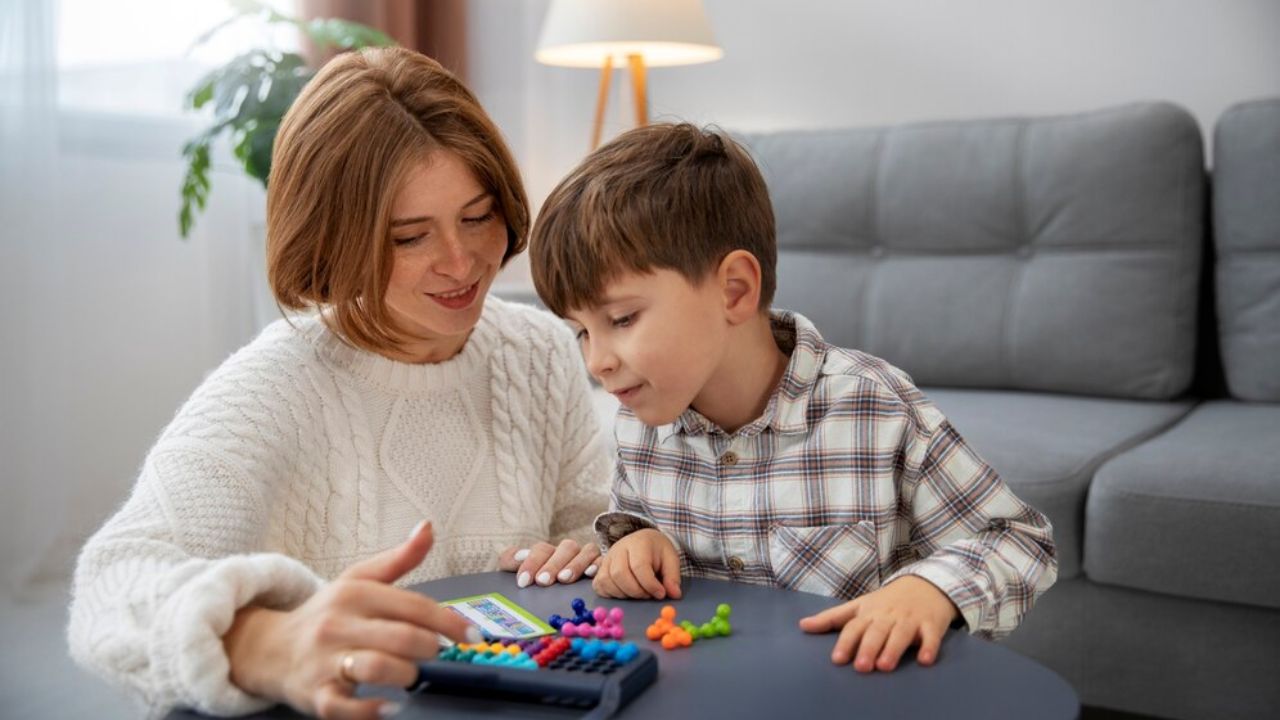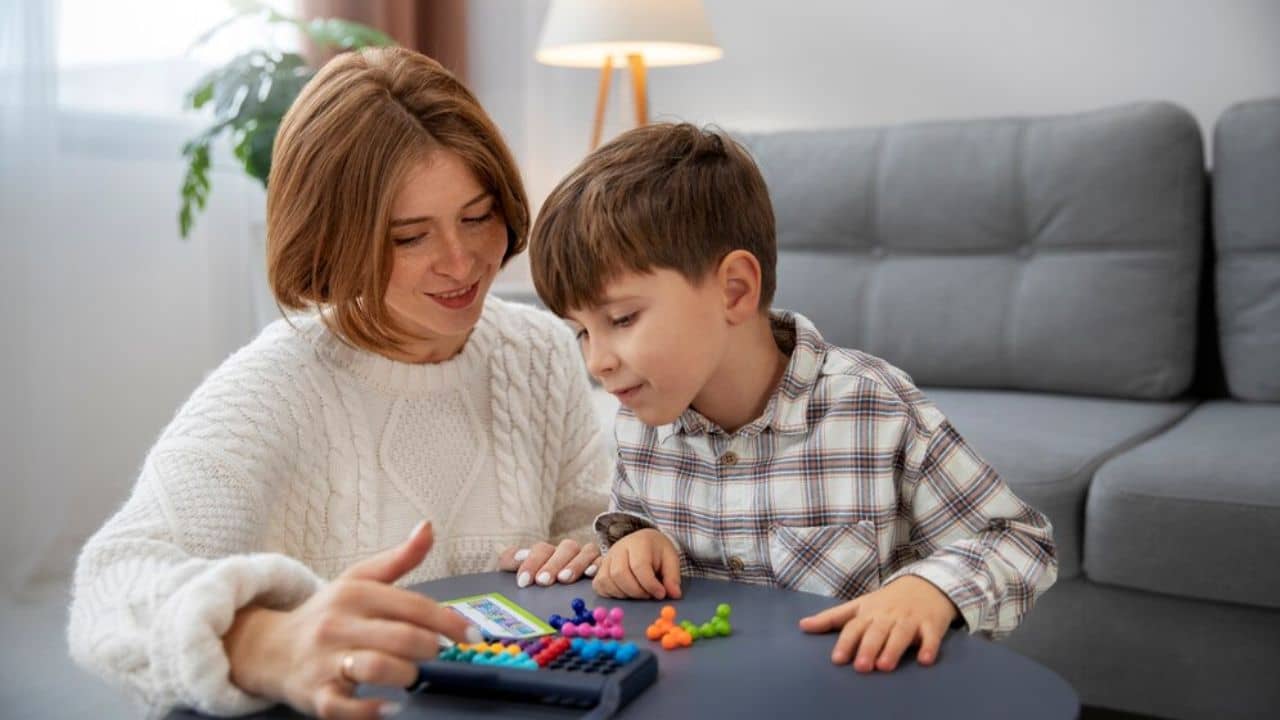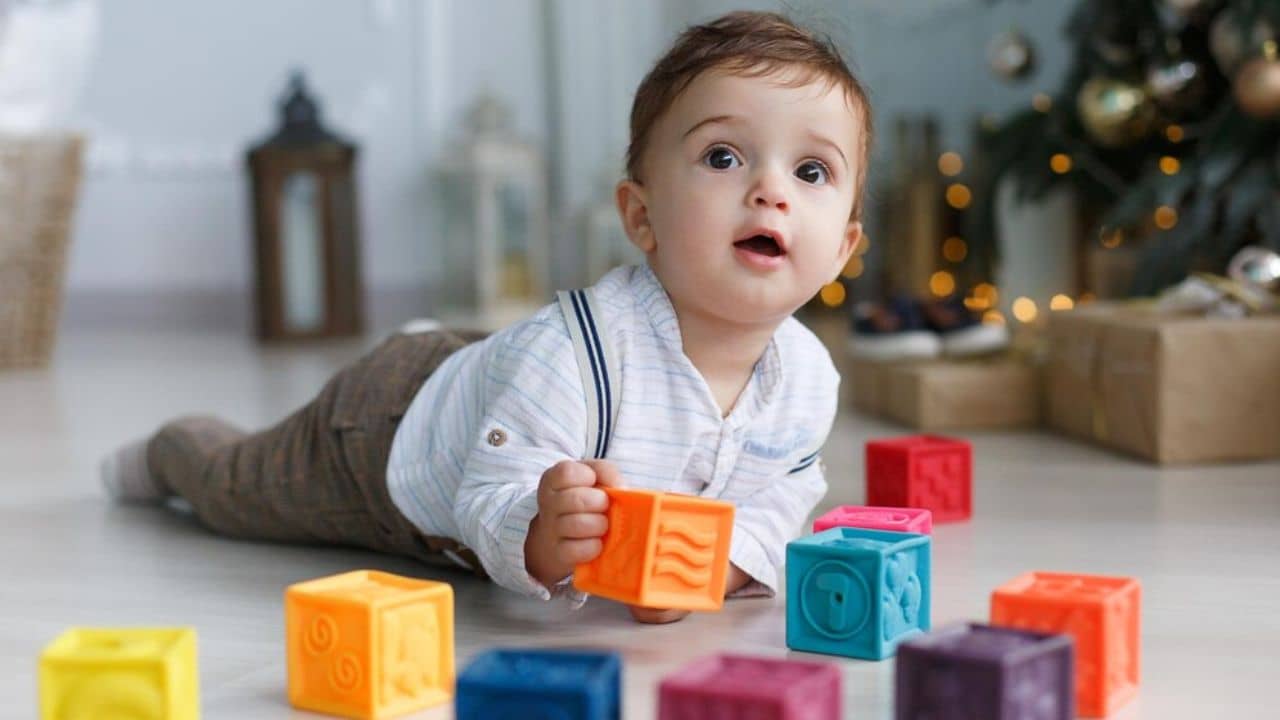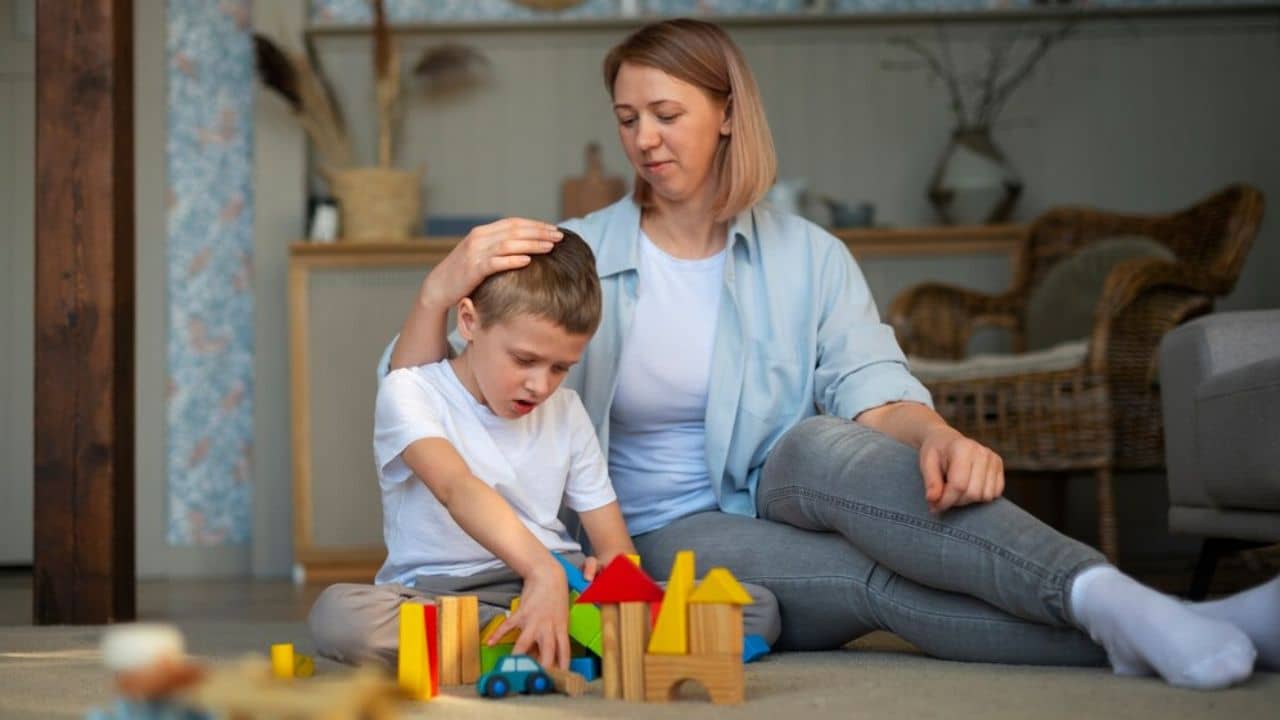At our Autism Therapy Center, we are committed to making a profound difference in the lives of individuals with autism and their families. Through personalized therapy, unwavering support, and a nurturing environment, we have been privileged to witness numerous success stories that highlight the incredible potential within each individual. In this blog, we share some of these remarkable journeys, illustrating how our center has played a pivotal role in transforming lives.

Jacob’s Journey: Finding His Voice of How Our Autism Therapy Center Changed Lives
Jacob’s story is a poignant example of how perseverance, personalized therapy, and a supportive environment can bring about transformative change. When Jacob first came to our Autism Therapy Center, he was a non-verbal five-year-old, struggling to communicate his needs and emotions. His parents, filled with hope and worry, sought our help to unlock Jacob’s potential and help him find his voice.
Early Challenges
From a young age, Jacob’s parents noticed that he wasn’t reaching typical developmental milestones. He rarely made eye contact, didn’t respond to his name, and showed little interest in interacting with others. By the time he was five, Jacob still hadn’t spoken a single word. His inability to communicate led to frequent frustration and meltdowns, creating a challenging environment at home and in public settings.
Tailored Speech Therapy
Understanding Jacob’s unique needs, our team of speech therapists designed a comprehensive, personalized therapy program for him. The program was built around play-based activities and interactive learning techniques, which we knew would engage Jacob while addressing his speech and communication challenges.
Building the Foundation
The initial months focused on building a foundation for communication. Our therapists used a combination of visual aids, gestures, and simple sign language to help Jacob understand the concept of expressing his needs. Activities were designed to be fun and engaging, incorporating his favorite toys and games to capture his interest.
Slowly but surely, Jacob began to respond. He learned to use simple signs like “more,” “eat,” and “help” to communicate basic needs. These small victories were celebrated by his family and our team, providing the motivation to continue pushing forward.
Breakthrough Moments
The real breakthrough came about six months into the program. During a session centered around his favorite snack, Jacob made his first vocal attempt to ask for a cookie. The moment was magical: Jacob, with a mix of determination and excitement, said, “cookie.” Tears of joy filled his parents’ eyes, and our therapists were overwhelmed with pride and happiness.
This milestone marked the beginning of rapid progress. Encouraged by his success, Jacob became more willing to try new words and phrases. His vocabulary expanded, and he started to form simple sentences. “I want juice,” “play ball,” and “go outside” became part of his everyday language.
Flourishing Communication Skills
By the time Jacob turned six, his transformation was nothing short of extraordinary. He could engage in basic conversations, express his feelings, and participate more actively in social settings. His confidence grew with each new word and sentence, and his frustrations diminished as he found effective ways to communicate.
Jacob’s progress didn’t stop there. Over the next few years, he continued to work with our speech therapists, refining his language skills and expanding his ability to communicate complex ideas and emotions. Today, Jacob is an eight-year-old who loves to chat about his day at school, his favorite stories, and his adventures with his pet dog.
Impact on Family Life
Jacob’s journey has had a profound impact on his entire family. His parents, who once worried about his future, are now filled with hope and pride. They have become active participants in his therapy, using the techniques and strategies learned from our team to support his continued growth at home.
Jacob’s newfound ability to communicate has also strengthened his relationships with his siblings and peers. He is now able to play cooperatively, share experiences, and build meaningful connections with those around him.

Emily’s Path to Independence: Overcoming Challenges of How Our Autism Therapy Center Changed Lives
Emily’s story is one of resilience, determination, and the transformative power of personalized therapy. A bright and energetic teenager, Emily faced significant challenges with social interactions and daily living skills, making her parents concerned about her ability to function independently and integrate into society. When Emily joined our Autism Therapy Center, we embarked on a journey together, aiming to equip her with the tools she needed to overcome these challenges and achieve independence.
Early Struggles
From an early age, Emily struggled with social interactions. She found it difficult to make friends, often misinterpreted social cues, and had trouble managing her emotions in social settings. These difficulties led to isolation and impacted her self-esteem. Additionally, Emily faced challenges with daily living skills such as cooking, managing money, and personal hygiene, which made her parents worry about her future independence.
Personalized ABA Program
Recognizing Emily’s unique needs, our team developed a comprehensive Applied Behavior Analysis (ABA) program tailored specifically for her. The program focused on enhancing her social skills, emotional regulation, and daily living abilities. Our goal was to provide Emily with the skills and confidence she needed to navigate her world independently.
Social Skills Training
One of the first areas we addressed was Emily’s social skills. Through structured group sessions and one-on-one interactions, we created a safe and supportive environment for Emily to practice and develop these skills. Role-playing activities, group games, and guided social scenarios were used to teach her how to initiate and maintain conversations, interpret body language, and develop empathy.
Initially, Emily was hesitant and anxious in these social settings. However, with consistent support and positive reinforcement, she gradually began to open up. She learned to recognize and respond appropriately to social cues, which helped her build and maintain friendships. Emily’s confidence grew as she experienced success in social interactions, and she started participating more actively in group activities both inside and outside of school.
Daily Living Skills
In addition to social skills, we focused on improving Emily’s daily living abilities. Our team worked with her on a variety of practical skills, including cooking simple meals, handling money, and managing personal hygiene. These sessions were designed to be hands-on and engaging, providing Emily with real-world experience in a supportive setting.
Emily learned to follow recipes, shop for groceries, and prepare meals independently. She also mastered budgeting and money management, which involved practical exercises such as planning a shopping trip and handling transactions. These skills not only enhanced her independence but also boosted her self-confidence and sense of accomplishment.
Emotional Regulation
Managing emotions and coping with stress were other critical areas of focus in Emily’s program. Through individualized therapy sessions, Emily learned techniques for emotional regulation, including mindfulness exercises, deep breathing, and cognitive-behavioral strategies. These tools helped her manage anxiety, reduce stress, and improve her overall emotional well-being.
Academic and Social Integration of How Our Autism Therapy Center Changed Lives
Emily’s progress in therapy was so remarkable that she was able to transition to a mainstream high school. This was a significant milestone, as it provided her with an opportunity to apply her newly acquired skills in a broader and more challenging environment. At her new school, Emily thrived both academically and socially. She made new friends, joined clubs, and participated in extracurricular activities, which further enriched her high school experience. How Our Autism Therapy Center Changed Lives
Supportive Family Environment
Emily’s journey would not have been possible without the unwavering support of her family. Her parents actively participated in her therapy, learning strategies and techniques to support Emily at home. They created a structured and nurturing environment that complemented her therapy sessions, ensuring that the skills Emily learned at our center were reinforced in her daily life.

Liam’s Social Success: Building Bridges of How Our Autism Therapy Center Changed Lives
Liam’s journey is a heartwarming example of how targeted social skills training and a supportive community can help children with autism build meaningful relationships and thrive socially. At ten years old, Liam struggled to understand social cues, initiate interactions, and form friendships. His parents were deeply concerned about his isolation and its impact on his overall development. Through a carefully designed social skills program at our Autism Therapy Center, Liam’s social world transformed, and he began to build bridges to lasting friendships. How Our Autism Therapy Center Changed Lives
Initial Challenges
Liam’s early years were marked by difficulties in social settings. He often felt uncomfortable and overwhelmed in group environments, leading to withdrawal and isolation. Liam had trouble interpreting body language, understanding social norms, and engaging in conversations, which made it hard for him to connect with his peers. His parents noticed that he preferred solitary play and avoided situations where he had to interact with other children. How Our Autism Therapy Center Changed Lives
Social Skills Group Program of How Our Autism Therapy Center Changed Lives
Understanding the critical need for social interaction in Liam’s development, our team created a social skills group specifically tailored for children like him. The group sessions provided a safe and structured environment where Liam could learn and practice essential social skills. Our approach combined fun activities, guided interactions, and role-playing scenarios to make learning engaging and effective.
Step-by-Step Progress
- Building Trust and Comfort: The first step was helping Liam feel comfortable and secure within the group. Our therapists used games and activities that aligned with his interests, allowing him to engage without feeling pressured. Gradually, Liam began to relax and participate more actively.
- Understanding Social Cues: Our team introduced exercises focused on recognizing and interpreting social cues such as facial expressions, body language, and tone of voice. Using visual aids and interactive role-playing, Liam learned to identify emotions and respond appropriately. For instance, he practiced recognizing when someone was happy, sad, or angry, and learned the corresponding social responses.
- Initiating and Maintaining Conversations: One of Liam’s significant hurdles was initiating and maintaining conversations. Through structured practice, Liam learned to start conversations with simple greetings and questions. He practiced turn-taking, active listening, and responding appropriately during interactions. Activities like “conversation circles” and “buddy chats” provided him with ample opportunities to refine these skills.
- Developing Empathy and Cooperation: Empathy and cooperation are crucial for building and maintaining friendships. Liam participated in group activities that required teamwork and collaboration. He learned to share, take turns, and consider others’ perspectives. Games and projects that involved working together helped Liam understand the value of cooperation and mutual respect.
Breakthrough Moments of How Our Autism Therapy Center Changed Lives
The turning point in Liam’s journey came during a group project where the children had to plan and execute a small event together. Liam took on the role of coordinating a simple game for the group. This responsibility helped him apply his newly acquired social skills in a practical setting. He successfully organized the game, communicated effectively with his peers, and even resolved minor conflicts that arose during the activity. This experience boosted Liam’s confidence and showed him that he could be an active and valuable member of a group.
Impact on School Life
Liam’s newfound social skills extended beyond our center and began to positively influence his school life. His teachers noticed a significant improvement in his interactions with classmates. Liam started participating more in group activities, making friends, and showing enthusiasm for collaborative projects. His ability to navigate social situations improved his overall school experience and academic performance. How Our Autism Therapy Center Changed Lives
Strengthening Family Bonds
Liam’s progress also had a profound impact on his family. His parents, who had felt helpless and concerned about his social isolation, were overjoyed to see him building friendships and interacting confidently. Our team provided the family with strategies to reinforce Liam’s social skills at home, ensuring that his progress continued beyond the therapy sessions.

The Anderson Family: Empowering Parents of How Our Autism Therapy Center Changed Lives
The Anderson family’s story exemplifies the importance of involving and empowering parents in the therapeutic process for children with autism. When they first came to our Autism Therapy Center, they were overwhelmed and unsure of how to best support their son, Ethan, who was diagnosed with autism at the age of three. Our goal was to equip the Andersons with the knowledge, skills, and confidence needed to create a supportive home environment that would complement Ethan’s therapy and enhance his development.
Initial Struggles
Ethan’s diagnosis brought a mix of emotions to the Anderson family. His parents, Sarah and John, felt a combination of relief at having an explanation for his behaviors and anxiety about the future. Ethan exhibited difficulties with communication, frequent meltdowns, and a rigid need for routines. His parents often felt helpless when trying to manage his behaviors and meet his needs. How Our Autism Therapy Center Changed Lives
Comprehensive Parent Training
Recognizing the critical role parents play in the development and well-being of children with autism, we designed a comprehensive parent training program for the Andersons. The program aimed to provide them with practical strategies and tools to support Ethan’s growth, improve family dynamics, and reduce stress.
Building a Structured Environment of How Our Autism Therapy Center Changed Lives
One of the first steps was helping Sarah and John create a structured and predictable home environment. Our team guided them in developing visual schedules and consistent routines that would help Ethan understand what to expect each day. This predictability reduced Ethan’s anxiety and decreased the frequency of meltdowns. Sarah and John learned to use visual aids, such as picture schedules, to communicate daily activities and transitions, making Ethan feel more secure and in control.
Effective Communication Strategies
Improving communication was another critical focus. Our therapists taught the Andersons how to use simple, clear language and visual supports to enhance Ethan’s understanding and expression. They learned to break down instructions into manageable steps and use visual cues to reinforce verbal communication. Additionally, we introduced the use of basic sign language and picture exchange communication systems (PECS) to help Ethan express his needs and reduce frustration.

Behavior Management Techniques
Managing challenging behaviors was a significant concern for the Andersons. Our team provided training on positive behavior support techniques, emphasizing the importance of reinforcing desirable behaviors and using proactive strategies to prevent meltdowns. Sarah and John learned how to identify triggers for Ethan’s challenging behaviors and implement strategies such as offering choices, using timers for transitions, and establishing clear expectations and rewards.
Emotional Support and Self-Care of How Our Autism Therapy Center Changed Lives
The emotional well-being of parents is crucial in supporting a child with autism. We encouraged Sarah and John to prioritize self-care and seek support when needed. Our therapists facilitated support group meetings where they could connect with other parents facing similar challenges, share experiences, and gain emotional support. This network of support helped them feel less isolated and more empowered to handle the demands of parenting a child with autism. How Our Autism Therapy Center Changed Lives
Collaboration with Therapy
The Andersons became active partners in Ethan’s therapy sessions. They observed sessions, participated in activities, and learned techniques they could apply at home. This collaborative approach ensured consistency between therapy and home environments, reinforcing Ethan’s learning and progress. Our team also provided regular feedback and adjusted strategies based on Ethan’s evolving needs.
Positive Outcomes and Ongoing Growth of How Our Autism Therapy Center Changed Lives
Over time, the Anderson family saw significant improvements in Ethan’s behavior, communication, and overall development. The structured routines and visual supports helped Ethan feel more secure and reduced his anxiety. His communication skills improved, leading to fewer frustrations and more positive interactions with his parents. The use of positive behavior support techniques resulted in fewer meltdowns and more cooperative behavior.
Sarah and John’s confidence as parents grew as they saw the positive impact of their efforts. They felt more capable of managing challenging situations and more connected to Ethan’s progress. The training and support they received not only benefited Ethan but also strengthened their family bonds and improved their overall quality of life.

Conclusion
The success stories of Jacob, Emily, Liam, and the Anderson family are just a few examples of the life-changing impact our Autism Therapy Center has had on individuals with autism and their families. Each story reflects the dedication, perseverance, and collaborative efforts of our team and the families we serve. As we continue to support and celebrate the unique strengths of each individual, we remain committed to our mission of helping those with autism lead fulfilling and independent lives. How Our Autism Therapy Center Changed Lives
Our center’s approach is rooted in the belief that with the right support and resources, every individual with autism can achieve their full potential. We are inspired by the progress and achievements of those we serve and are honored to be part of their journeys. Together, we are building a brighter future, one success story at a time. How Our Autism Therapy Center Changed Lives




